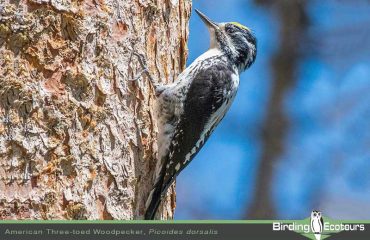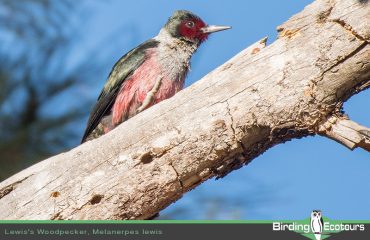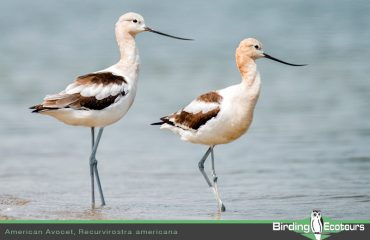2025 Wyoming – Yellowstone and Grand Teton
-
Reviews 0 Reviews0/5
-
Vacation Style Holiday Type
-
Binoculars
-
Hiking
-
Wildlife
-
-
Activity Level Moderate
-
Group Size Medium Group
One of the world’s greatest national parks, Yellowstone, covers a vast area in sparsely populated Wyoming, a state where antelope outnumber people, and marginally into both Montana and Idaho. Arguably the most impressive-looking mountains in all of America lie just to the south and are protected in another national park adjacent to Yellowstone, Grand Teton National Park. The majestic Grey Wolf, along with the fierce Grizzly Bear, huge herds of American Bison, water-loving Moose, wandering herds of Elk (Wapiti), and a plethora of other large and small mammals make this national park almost comparable to an African park with its big herds and predators. We’ll be on the constant lookout for some much more difficult to spot mammals as well, including Wolverine, Puma (Mountain Lion), American Badger, and Canada Lynx. Yellow-bellied Marmot, American Pika, and the amazingly cute Least Chipmunk are three of the more common small mammals we are likely to encounter.
The Rocky Mountains also boast a lot of special birds, including Black Rosy Finch, American Three-toed Woodpecker, Williamson’s Sapsucker, Dusky Grouse, the majestic, two-foot-high Great Grey Owl, and many more. The beautiful Steller’s Jay and charismatic Canada Jay are usually easy to find roaming through the parks. Clark’s Nutcracker, Townsend’s Solitaire, Mountain Bluebird, American Dipper, and other classic birds of America’s western mountains are also usually present. Pine Grosbeak and other special birds will also be sought proving this region to be an amazing location for birds and mammals alike!
We run this trip in the fall, when the colors (mainly yellow in this part of the world, unlike the more varied colors of the east), are unbelievably stunning against the backdrop of America’s most beautiful mountains that rise straight from the surrounding plain. In addition to our mammal and bird viewing during this tour we also stop to photograph and take in some of this incredible scenery that Yellowstone and the Tetons offer. Yellowstone Caldera, which dominates the national park, is often called a “supervolcano”, the largest volcano in North America. Not wanting to scare people off, but this volcano is due for an eruption, and the park also experiences thousands of small earthquakes a year (most of them undetectable by humans). We’ll pay a visit to one of the most famous geysers in the world, Old Faithful, but we’ll also be sure to look at some of the more spectacular of the 10,000 geothermal oddities in this park while searching for wildlife.
On this trip we’ll look for a great many mammals and birds. Extra time will be spent trying to find tougher species that are in reality only very rarely seen (e.g. Puma). In general, we try to keep the pace of this trip slower than on our other tours to allow more time for scenery and wildlife photography. Having said that, there’s no guarantee we’ll have “down time”, as there is a humongous amount to see in a vast area spanning three states.
Duration: 9 days
Limit: 5 – 8
Date: 22-30 September 2025
Start: Bozeman, Montana
End: Bozeman, Montana
Price:
US$5723 per person sharing assuming 5 – 8 participants
Single supplement: US$1386
We can run the same trip at a price similar to the larger group price for 2 tour participants, if they rent their own vehicle and pay for fuel – please e-mail [email protected] for details.
- Meals
- Accommodation
- Guiding fees
- Entrance fees
- All transport while on tour
- Tolls
- Domestic and International flights
- Items of a personal nature, e.g. gifts
- Alcoholic drinks
- Personal insurance
- Laundry Service
- Gratuities
-
Will we do any birding the first day?
-
How should I dress for the tour?
-
Besides clothes, what do I need to bring?
-
What language are tours conducted in?
-
Can you help me book flights?
-
Can you book accommodation for us the night before the tour starts or the night the tour ends?
-
Do you provide trip insurance?
-
Are meals included?
-
 American Bison
American Bison
-
 Elk
Elk
-
 American Black Bear
American Black Bear
-
 Clark's Nutcracker
Clark's Nutcracker
-
 Gray-crowned Rosy-Finch
Gray-crowned Rosy-Finch
-
 Black Rosy-Finch
Black Rosy-Finch
-
 Pronghorn
Pronghorn
-
 Gray Wolf
Gray Wolf
-
 Bighorn Sheep
Bighorn Sheep
-
 Great Gray Owl
Great Gray Owl
-
 Mountain Goat
Mountain Goat
-
 Red Fox
Red Fox
-
 American Three-toed Woodpecker
American Three-toed Woodpecker
-
 Lewis's Woodpecker
Lewis's Woodpecker
-
 Williamson's Sapsucker
Williamson's Sapsucker
-
 Townsend's Solitaire
Townsend's Solitaire
-
 Red-naped Sapsucker
Red-naped Sapsucker
-
 Pine Grosbeak
Pine Grosbeak
-
 Steller's Jay
Steller's Jay
-
 Canada Jay
Canada Jay
-
 Sharp-tailed Grouse
Sharp-tailed Grouse
-
 Ruby-crowned Kinglet
Ruby-crowned Kinglet
-
 American Avocet
American Avocet


